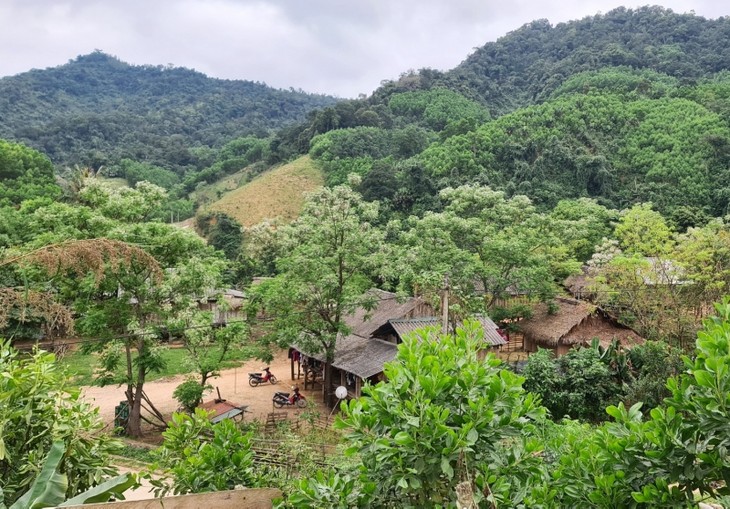(VOVWORLD) - Vietnam consistently devotes resources and preferential programs and policies to the development of ethnic minority-inhabited areas. According to a resolution until 2025, with a vision to 2030, Quang Binh will attach special importance to preserving cultural identity and maintaining security and order in border communes and ethnic minority areas.
 Quang Binh has 15 mountain and border communes with more than 27,000 ethnic minority people. (Photo: VOV) Quang Binh has 15 mountain and border communes with more than 27,000 ethnic minority people. (Photo: VOV) |
Dinh Du of Ca Roong hamlet in Bo Trach district has over the years traveled extensively to study economic development models of farming, husbandry, and other forms of agribusiness. He sees models that look effective but have problems when applied in Ca Roong, partly because of a shortage of productive land. Du said he hopes Quang Binh will create specific subsistence mechanisms for mountain areas to help the locals escape poverty.
“The Party and State need to provide more support for farmers in land planning for production, afforestation, and cassava cultivation. We hope such support will encourage us in socio-economic development,” said Du.
Quang Binh has 15 mountain and border communes with more than 27,000 ethnic minority people, whose poverty rate is about 70%. Infrastructure remains poor, production is backward and fragmented, and links between production and distribution are underdeveloped. Per capita income is lower than the province's average. Poverty reduction results are not sustainable.
Quang Binh province recently held a conference to gather the opinions of village patriarchs and prestigious people among the ethnic minorities to develop an economic development plan for ethnic minority areas.
Quang Binh will issue a resolution on socio-economic development, preservation of cultural identity, and security and order in border communes and ethnic minority and mountain areas until 2025 with a vision to 2030.
Ho An Phong, Vice Chairman of the provincial People's Committee, said policies for ethnic minority areas are based on the potentials and advantages of each region.
According to Phong, “The resolution seeks to mobilize resources for socio-economic development in ethnic minority areas, reduce the development gap between highland and lowland areas, and help Quang Binh grow quickly and sustainably.”
By 2025, Quang Binh hopes to reduce the poverty rate in ethnic minority areas 3 to 4% each year, have 10% of the communes in ethnic minority areas meet the new-style rural standards, and give 99% of the households access to electricity and other power sources.
The province will address the migration of ethnic minorities and relocate all ethnic minority households scattered in special-use forests and natural heritage sites to better places.
Quang Binh has allocated forest land to these people. Ideas have been proposed to resolve the shortage of production land, residential land, water for daily use, and a means of subsistence for people living near forests.
The province has devised mechanisms and policies to encourage the development of eco-tourism that unlocks the potential of each mountain locality to create jobs for ethnic minority people.
Vu Dai Thang, Secretary of the provincial Party Committee, said, “The provincial Party Committee has asked the People's Committee, departments, and agencies to develop action plans and specific projects to realize the resolution.”
“All the programs aim to develop communes in border and ethnic minority areas so they can keep pace with the development in lowland areas,” added Thang.